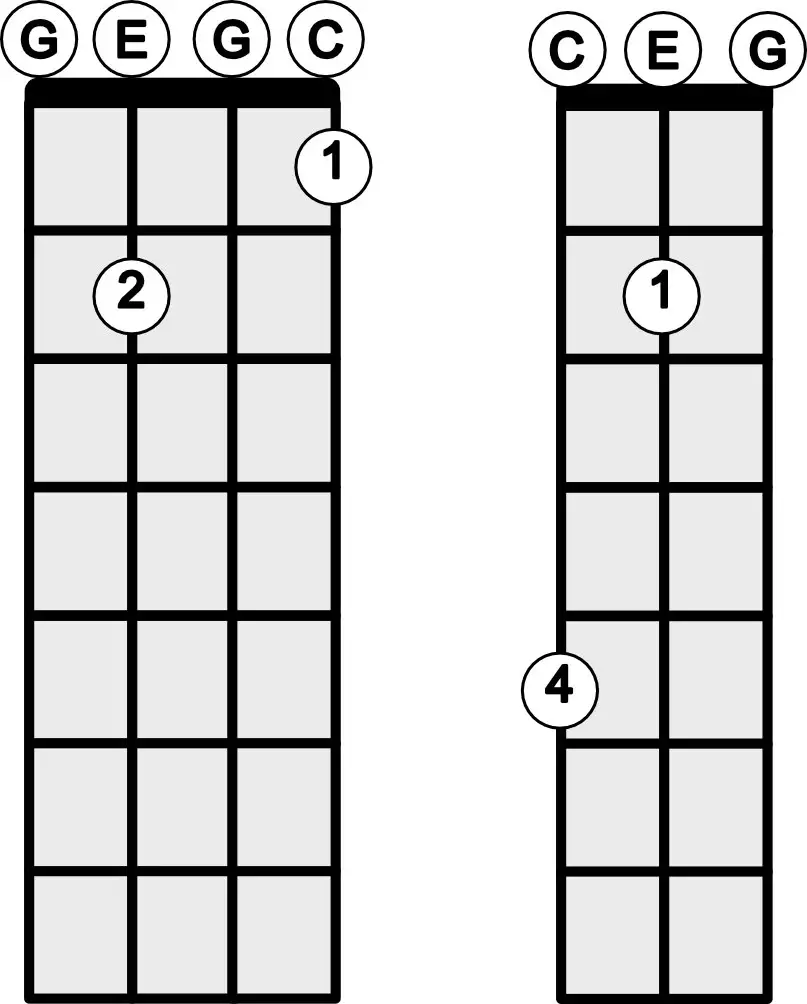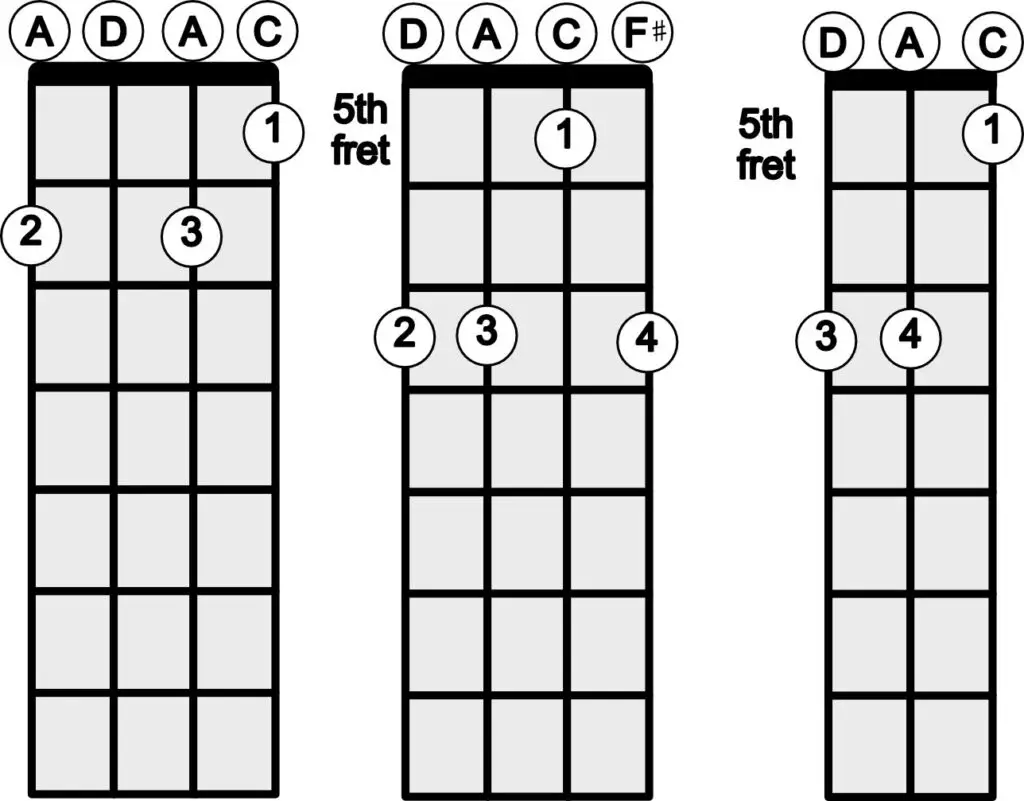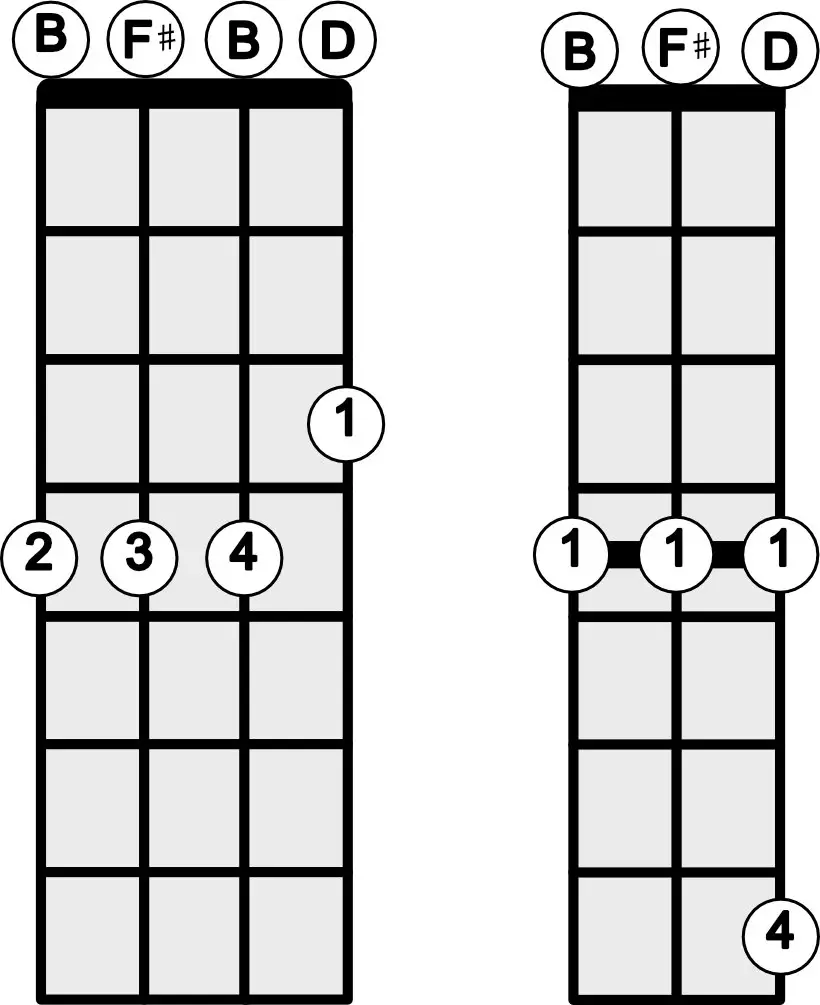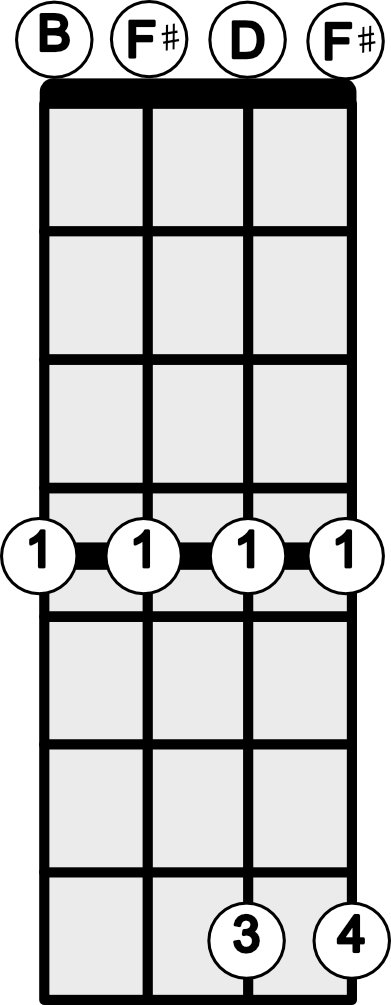Although1-finger barre chords are slightly harder to play on a 4-string guitar because of the extra string to fret, shaped chords are different.
I’ve been experimenting with easy ways to play the chords of the G Major family and I’m finding that the extra string on a 4-string Cigar Box Guitar makes some chord shapes much easier.
These chord shapes are for a guitar tuned G D G B.
G Major Chord On A 4-String vs 3-String Cigar Box Guitar
Since the notes of the guitar are the same as the notes of the G Major chord, just strumming the open notes plays the G Major chord. It sounds slightly fuller than the G Major chord played by 0 0 4 on the 3-string guitar because the G note is played twice.

Here you can see how these 2 chord shapes both play the notes G D B making a G Major chord. The 4-string version sounds fuller because there are 2 G notes in the chord and it’s also easier to play on the 4-string Cigar Box Guitar.
Comparing C Chords On A 3 and 4-String Cigar Box Guitar
The extra string on the 4-string guitar makes it so much easier for me to play the C Major chord. I’ve always struggled with the stretch required on the 3-string guitar for the shaped C Major chord.

Although this way of playing the C Major chord on the 4-string Cigar Box Guitar doesn’t have the C in the bass, I personally find the sound perfectly acceptable and it’s so much easier to play than the big stretch required on the 3-string Cigar Box guitar.
Comparing D7 Chords On a 3 and 4-String Cigar Box Guitar
To play the dominant 7 in the key of G, that is the D7 chord, we have a problem with the 3-string guitar. The 7 chord is comprised of the 1 3 5 and b7 notes but we only have 3 strings so we are going to have to miss out one of the notes. Personally, I tend to miss out the 3rd note and this makes for a chord shape that can be either the dominant or minor 7.
So for the chord of D7, we play the notes D A and C on the 3-string guitar with the shape 7 7 5 as shown below.
With a 4-string guitar, we can play 4 different notes and for D7 we need D F# A C, but I cannot find an easy way to play this chord with all 4 notes without going up to the 5th fret. I just don’t have the stretch required ( and I don’t like using my thumb on the bass string) so I have 2 versions of the 4-string D7 chord below, one of which misses out the F#

The 1st and 3rd chord shapes shown are a bit of a compromise as they both miss out the 3rd note of the D7 chord, the F#, but overall I’m fairly happy with the sound. The 4-string version is slightly easier for me to play.
The 2nd shape has a good sound as it has all 4 notes of the D7 chord, but is slightly more tricky, so sometimes I play this shape and sometimes the easier 1st shape.
E minor chord on 3-String and 4-String Cigar Box Guitar
The 3 chords above will enable you to play 1000s of songs in G but some require the relative minor so I will show you how to play E minor on both the 3 and 4-string Cigar Box Guitar.
The E minor chord requires the notes E G B and is not too difficult a chord on either 3 or 4-string Cigar Box Guitar:

Both of these chord shapes sound good and are not too difficult. If you like you could mirror the 3-string version and play the G in the bass and the B on the top string, but I prefer the sound of the B in the bass.
Comparing Other Minor Chord Shapes On 3 and 4-String Cigar Box Guitars
I do find the minor chord shapes I show you on the 4-string guitar below a little awkward and if I’m playing a lot of minor chords, I tend to tune my top string down from B to Bb. You can read about this in this article:
https://beginnercbg.com/3-alternative-tunings-for-4-string-cigar-box-guitar/
The shapes I show below are movable so you can use them anywhere on the neck. The name of the minor chord is the same as the name of the bass note in both versions.

These shapes are for the A minor or Am chord. Neither chord shape is too difficult for me.
A minor is the relative minor of C Major and E minor is the relative minor of G Major. Our final chord of this lesson is the B minor chord. It is exactly the same as the A minor shape, but shifted up the neck by 2 frets:

These shapes are for the B minor or Bm chord. I actually find the 3- string version slightly easier at the moment but I’m still fairly new to the 4- string Cigar Box Guitar so that might change.
However the further up the neck I shift this shape, the harder and harder I find it. It’s all to do with getting the angle correct.
Missing out the bass string ( i.e. don’t fret it and don’t play it) and swapping my fingers to use my 1st, 2nd and 3rd fingers is an alternative that I am exploring.
Another option is to use the shape below.

This shape is for the B minor chord on a 4-string Cigar Box Guitar. It is a movable shape. I do find this quite a stretch at this fret, but a little easier a bit further up the neck where the frets are slightly closer together.
3 Or String Cigar Box Guitar- Which Is Best For Me?
There are pros and cons to 3 and 4- string guitars. If you want to stick to 1-finger barre power chords, the 3- string is probably a better option as it is slightly easier to play. However if you want to play more complicated chords, like Major, minor, 7th or even more complicated shaped chords like those used in jazz, 4 strings gives you a lot more flexibility.
